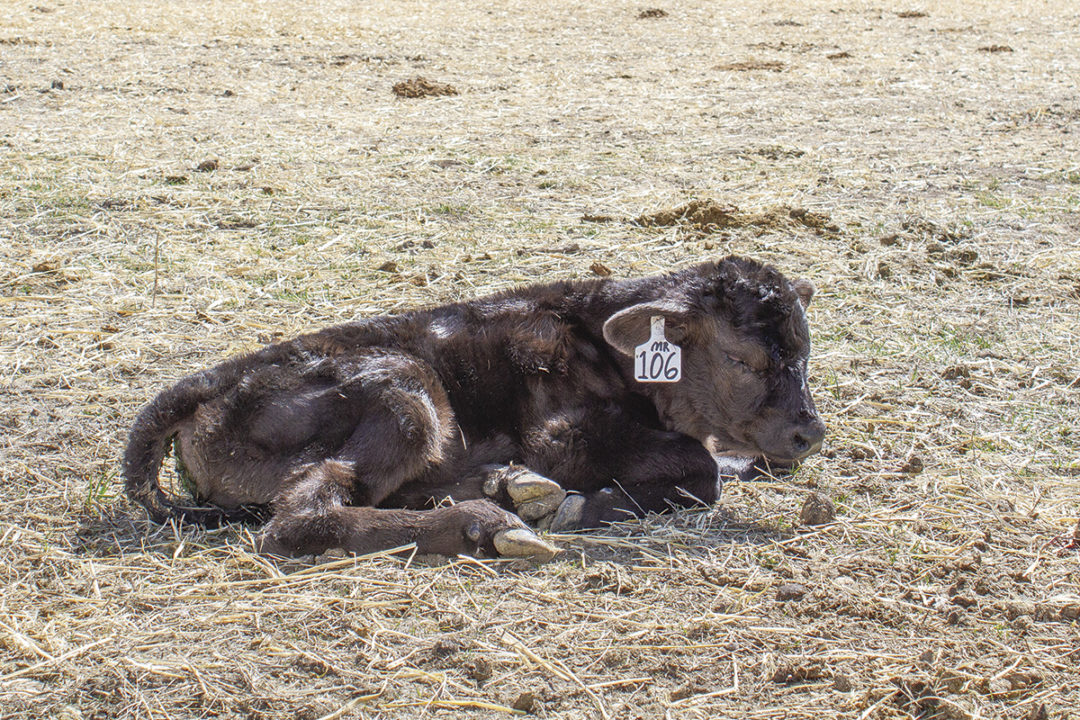Neonatal diarrhea, or calf scours, is one of the costliest diseases in the cattle business and is responsible for more mortalities in calves under 1 month old than any other disease.
Early preparation to counteract scours
According to Mark Alley, managing veterinarian for Zoetis, scours need to become a consideration well before a calf is born.
“Cows must be in good condition to produce colostrum 60 days prior to calving,” he says. “This is also a key time to deliver scour vaccines to the females that will become incorporated into colostrum. This will help provide enough calf vitality and vigor for solid ingestion, critical for both a strong start in life and long-term productivity.”
While non-infectious origins, normally from a lack of colostrum to support the immune system, are the largest causes of scours, infectious pathogens such as rotavirus, coronavirus and cryptosporidium make up 95% of infectious cases in very young calves.
“With diarrhea, I tell people not to pay too much attention to what’s going on at the rear end as far as color or consistency is concerned,” Alley says. “One of the biggest misconceptions is that we can diagnose scours based on color. Rather, pay attention to the look of the eyes and ears for brightness or depression.”
He explains bacteria and viruses are constantly in the environment and says it’s essentially a race against time to supply enough colostrum to protect a young calf.
Protecting against pathogen assault
“The two main viruses and the parasite causing infectious scours bring with them a host of factors,” says Joe Armstrong, cattle production systems educator at the University of Minnesota. “It’s more a systems issue. Colostrum is the number one thing we need to get right, but dam health and nutrition followed by levels of pathogen exposure is crucial. The more pathogens they see, the more likely they are to get sick and have the sickness be more severe.”
Armstrong admits it isn’t easy keeping pathogens from overwhelming young calves. While colostrum delivery is somewhat controllable, making targeted nutritional decisions for year-round dam care provides the best insurance for adequate colostrum and calf nutrition.
“Year-round care of mom should be the emphasis,” he stresses. “In the past, it’s been suggested late gestation and early lactation were key. We now know this isn’t enough.”
Management for better care and control
Pathogen control often comes down to strategies at calving time. For example, the Nebraska Sandhills calving method manipulates levels by separating age groups. For regions with limited space, a consistently cleaned, designated area used only for calving cuts exposure. Tight calving windows also help as age variation is reduced.
When scours occur, Armstrong says treatment is almost entirely an age-based process with a physical exam displaying what needs to be done. Antibiotics are only required if a fever is present, or the calf presents with a lower-than-normal temperature. Supportive care should be the focus.
“We need to get after dehydration and then take care of inflammation and pain,” he says. “This is done with electrolytes and an NSAID of some variation.”
Alley agrees and adds that fluid therapy, whether oral or intravenous, should be the mainstay.
“The biggest challenge is often too little fluids are given,” he says. “Ninety-pound calves need almost 2 gallons in a 24-hour period including milk. When we don’t deliver enough fluid, dehydration becomes the biggest killer of these newborns.”
Armstrong emphasizes that, contrary to previous ways of thinking, milk should never be withheld to control scours, as sick calves continue to require calories for their support.
“If we pull milk, it’s true they won’t scour because they’ll have nothing to scour,” he says. “We need to continue the calories to fight infections, and then we add electrolytes, plus or minus antibiotics if needed.”
Coccidiosis challenge in older calves
A separate health issue facing slightly older calves is coccidiosis, the result of coccidia, or host-specific protozoan parasites shed in feces and becoming infective in moist, warm environments. Coccidia oocysts are then ingested in contaminated feed, water and pastures, or by licking dirty hair coats. The parasite develops inside the host, damaging intestinal cells and resulting in diarrhea and bloody feces. This damage negatively impacts fluid absorption, increasing dehydration.
“It’s spread by cows and older calves everywhere,” Armstrong says. “Most older animals are able to deal with exposure without developing symptoms by building species-specific immunity.”
He explains coccidia has a life cycle of about three weeks, so even if exposure occurs at birth, it doesn’t become immediately problematic. As calves grow older, they need water to stay hydrated. If clean water isn’t easily available, they’ll drink from anywhere, often meaning dirty, parasite-filled puddles.
Recognizing and withstanding coccidia
Clinical signs include blood in the diarrhea but also sunken, dull eyes and a lack of rumen fill.
“With the 21-day life cycle, we’re always looking in the past to figure out what happened,” Armstrong says. “It’s tricky, as calves might be on pasture today and display coccidia but were at home three weeks ago, so where did they get exposed?”
He says for producers facing these problems, the temptation is to treat the sick and move them away from the area. In reality, if space allows, they should be left and only healthy animals moved, since relocation only spreads contamination.
Alley says coccidiosis is largely based on parasite dosage, meaning the more parasites are ingested, the more likely calves are to develop clinical signs, which can kill them if left unchecked.
“A large concern is it makes them more susceptible to other diseases,” Alley says. “Typically, it’s influenced by the timing of other stressors. For example, if they experience a respiratory challenge and coccidia is also present, the body shifts the immune system to fight the parasite, thereby reducing the ability to fight the virus.”
Gathered data covering early life events shows scours and coccidiosis are causing increased feedlot problems later in life compared to animals not facing these trials. Both issues are extremely costly and result in early death, subtle illnesses, reduced productivity and an increased susceptibility to secondary diseases.












